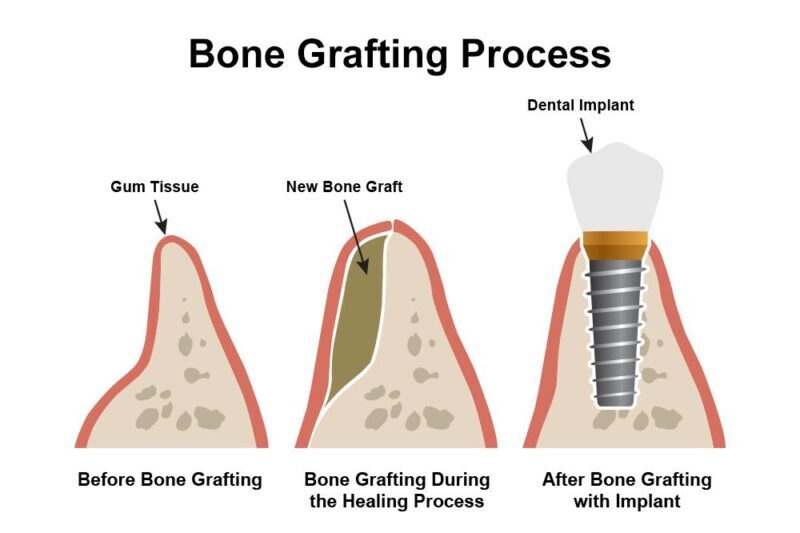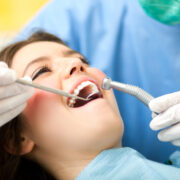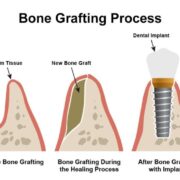Taking the step to restore your oral health by undergoing dental bone grafting might be very important. We’ll explore the complex Dental Bone Graft: Healing Stages process for bone grafts, and insight into the stages that come after. It is essential that you comprehend the nuances of each healing stage as you proceed through the recovery process. We’ll demystify the procedure with simplicity and clarity, covering everything from the initial insertion of the graft to the integration of new bone tissue. With information on what to anticipate and how to take care of your recently grafted dental foundation, this book seeks to be your companion.
Know Dental Bone Graft
Dental bone grafting is a cutting-edge treatment designed to address issues related to jawbone loss. It provides a means of strengthening and reconstructing the supporting structure for dental implants or other restorative procedures. Let’s break down this complex procedure to have a thorough grasp.
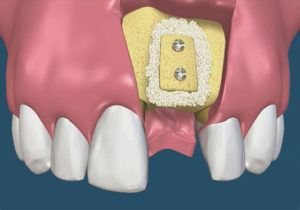
What is a Dental Bone Graft?
A dental bone graft is essentially the transplantation or addition of bone tissue to a particular region of the jaw when there is insufficient bone density. The main goal is to provide a strong and encouraging environment, which will be especially helpful for those who have lost bone as a result of trauma, periodontal disease, or other dental issues.
This procedure serves a dual purpose:
- Structural Reinforcement: The graft acts as a scaffold, providing a framework for the regeneration of new bone tissue.
- Preparation for Dental Procedures: By enhancing bone density, grafting facilitates the success of subsequent dental treatments, such as implant placements, ensuring a stable and lasting outcome.
Types of Dental Bone Grafts
Autografts
Bone tissue is transferred from one area of the patient’s body—typically the hip, jaw, or tibia—to another during autograft procedures. Because the patient provides the graft material and the bone integrates well, there is a decreased risk of rejection. Care must be taken since the second surgical site for graft harvesting may cause more discomfort at the donor site.
Allografts
Allografts use bone tissue that has been treated and sterilized before transplantation, usually from a corpse. Because allografts remove the need for a second surgical site, the process is less invasive for the patient. The use of donor tissue carries a small risk of disease transmission but is thoroughly checked for safety.
Xenografts
In xenografts, animal bone tissue—typically from pigs or cows—is used. It is carefully processed to remove any living elements. For patients with particular concerns, xenografts, which are widely accessible and reasonably priced, may be a good substitute. Although thorough processing reduces these hazards, there are still potential worries about the immunological response and disease transmission.
Indications for Dental Bone Grafting
- Dental Implant Preparation: Grafting creates a sturdy foundation for successful dental implant placement.
- Periodontal Disease: Severe gum disease may result in bone loss, warranting grafting to restore structural integrity.
- Trauma or Injury: Accidents or injuries may cause significant bone damage, necessitating grafting for reconstruction.
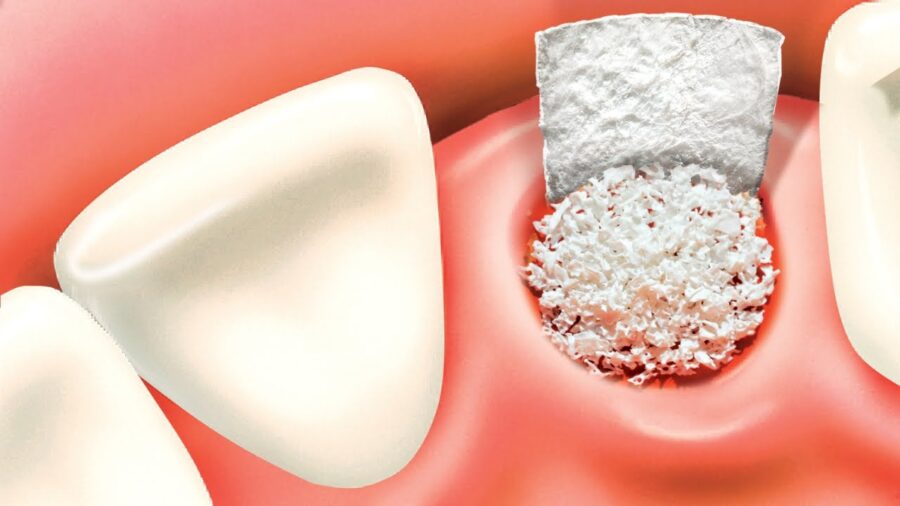
Dental Bone Graft: Healing Stages
Starting a dental bone grafting procedure requires going through several healing phases. To promote a successful and painless healing process, it is imperative that dental professionals and patients alike understand the subtleties of each step.
Pre-operative Considerations
The patient’s whole health and dental history are carefully examined before the grafting procedure is started. Finding possible risk factors enables the process to be tailored to each patient’s needs, guaranteeing a successful and safe end.
Based on the assessment, a treatment plan is meticulously crafted, considering the type of graft, its source, and the specific area in need of reconstruction. Clear communication between the patient and dental professional ensures alignment in expectations and outcomes.
Surgical Procedure
Anesthesia and Incision
Patient Comfort: Local or general anesthesia is administered to ensure the patient’s comfort during the procedure.
Precision Incisions: Skilfully placed incisions provide access to the treatment area while minimizing trauma to surrounding tissues.
Graft Material Placement
Strategic Placement: The selected graft material, be it autograft, allograft, or xenograft, is meticulously placed in the targeted area.
Integration Strategy: The dental professional employs techniques to promote optimal integration of the graft with existing bone structures.
Closure Techniques
Secure Sealing: Closure of incisions is performed with precision, employing techniques that minimize scarring and promote proper healing.
Sutures: The use of dissolvable or removable sutures depends on the case, ensuring a tailored approach to wound closure.

Immediate Postoperative Care
Pain Management
Prescribed pain medication is provided to manage post-operative discomfort effectively. Patients receive guidance on at-home pain management strategies, including the application of cold packs and rest.
Swelling and Bruising
Information on normal post-operative swelling and bruising is shared, alleviating concerns and setting realistic expectations. Recommendations for minimizing swelling, such as keeping the head elevated, are provided.
Antibiotics and Oral Hygiene
In order to avoid infection, antibiotics may be provided; this highlights the need to follow the recommended course of action. In order to keep their mouths clean and avoid disturbing the grafting site, patients get education on modified oral hygiene habits.
Blood Clot Formation
Initial Protection: A blood clot forms at the graft site, providing a protective barrier for the healing process.
Avoidance of Disruption: Patients are advised to avoid activities that may disturb the forming clot, ensuring the graft’s stability.
Initial Graft Stabilization
Cellular Activity: Cellular activity initiates the integration of the grafts with the surrounding bone.
Monitoring Progress: Follow-up appointments enable the dental professional to monitor graft stability and address any concerns.
Dietary Considerations
Nutrient-Rich Choices: A diet rich in vitamins and minerals is recommended for the best possible recuperation.
Avoidance of Disruptive Foods: Patients are guided on food choices that won’t compromise the graft, promoting successful early healing.
Recovery Process After Dental Bone Graft
After a dental bone graft, the healing phase is an important time that requires close monitoring and adherence to protocol. Here, we explain the steps involved in long-term stabilisation, the return to regular activities, and the handling of any potential difficulties to guarantee a smooth journey to a restored smile.
Monitoring Graft Integration
Regular radiographic tests are carried out to monitor the graft’s integration with the surrounding bone structures. During follow-up appointments, dentists evaluate the stability and general health of the graft.
Follow-up Appointments
To monitor progress and handle any new issues, follow-up visits are set on a regular basis. Patients receive advice on continuing care and possible schedule modifications during these sessions.
Exercise Restrictions
Patients are advised to resume physical activity gradually, with an emphasis on avoiding demanding workouts that can strain the graft site. Before resuming intense physical activities, patients may need to consult with their healthcare providers to ensure a safe transition.
Dietary Modifications
Patients are usually able to resume a more normal diet as the healing process moves on. Maintaining a focus on a diet high in nutrients promotes general health and helps with long-term healing.
Aftercare for Dental Bone Graft Patients
The road to a full recovery after dental bone grafting is not yet complete with cautious treatment. For the best recovery and long-term success, it is crucial to pay close attention to dental cleanliness, dietary decisions, and lifestyle modifications.
Preservation of Graft Integrity
Aftercare is not just a postscript; it’s a critical chapter in the success story of a dental bone graft. Adhering to aftercare guidelines is fundamental to preserving the integrity of the graft and promoting its seamless integration with existing bone structures.
Prevention of Complications
Aftercare serves as a shield against potential complications such as infections, graft failure, or excessive pain. It acts as a proactive measure to safeguard the investment made in dental health.
Oral Hygiene Practices
Brushing and Flossing Techniques
Gentle Precision: Use a soft-bristled toothbrush and employ gentle brushing techniques to avoid disturbing the bone grafts site.
Flossing Caution: Floss carefully around the treated area, ensuring thorough cleaning while being mindful of not causing irritation or damage.
Mouthwash Recommendations
Antiseptic Rinse: Incorporate an antiseptic or prescribed mouthwash into your oral hygiene routine to minimise the risk of infection.
Alcohol-Free Options: Opt for alcohol-free mouthwashes to prevent irritation and ensure a gentle approach to oral care.
Smoking Cessation
Critical Decision: Smoking poses a significant risk to the success of the graft. Consider quitting smoking altogether to promote optimal healing.
Consultation with Professionals: Seek guidance from healthcare professionals or smoking cessation programs to support this crucial lifestyle adjustment.
Alcohol Consumption Guidelines
Moderation is key: If consuming alcohol, do so in moderation. Excessive alcohol intake can hinder the healing process.
Consideration of Healing Phase: During the initial healing phase, it may be advisable to limit or avoid alcohol to facilitate an uncomplicated recovery.
Conclusion
To sum up, it takes accuracy and dedication to navigate the complex terrain of Dental Bone Graft: Healing Stages. Through a focus on aftercare, which includes careful dental cleanliness, thoughtful food selection, and important lifestyle modifications, we strengthen the basis for a restored smile. Stressing the value of adhering to aftercare recommendations guarantees the graft’s smooth integration. Like tuning an instrument, routine dental checkups offer continuous monitoring that makes sure the healing process stays in tune. Keep in mind that your dedication to aftercare composes the healing symphony that shapes not just bones but also the enduring melody of ideal dental health.

